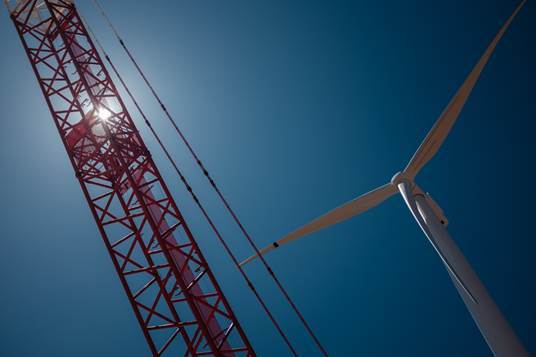
Two engineering and design firms are working together to deploy the world’s first multi-turbine floating wind-energy demonstrator off Dounreay in 2018.
Sweden-based Hexicon appointed WS Atkins as its engineering partner last year to help design the pioneering offshore wind technology.
The floating “wind farm” will consist of two turbines fixed onto a single semi-submersible platform, with a total capacity of 8 to 12 megawatts.
Norwegian energy giant Statoil has its own plans for a floating wind farm off Aberdeenshire, with electricity slated to hit the grid in late 2017.
But the turbines for Statoil’s Hywind development will be moored individually, rather than in pairs.
Dounreay Tri, the company formed to guide through the project, intends to install its platform 3.7 miles off Dounreay, the home of one of the world’s foremost nuclear testing facilities, along with an export cable to bring the power to shore.
Onshore infrastructure would also be needed to connect it to the existing substation at Dounreay.
A tentative timetable set out by venture estimated planning applications would be submitted by April 2016.
But the project appears to be behind schedule. It is currently in the pre-application stage according to the Marine Renewable Energy Projects page on the Scottish Government’s website.
The next checkpoints were to obtain planning permission in March 2017, reach financial close the following month, before installing and commissioning the turbines in summer 2018.
Hexicon project director Marcus Thor did not respond to a request for comment on the consenting process yesterday.
Jack Farnham, senior offshore developer at RES Offshore, which helped draw up an outline description of the proposed development, declined to comment when contacted.
A spokesman for Atkins said yesterday his employer was still in the “design phase”.
He said no new jobs had been created at Atkins by the project, as the firm’s existing renewables team was covering the work.
Atkins’ team has already contributed to the design of Hexicon’s technology. The spokesman said the system which allows the turbines to rotate to capture the wind had been improved, reducing construction costs and maximising energy yield.
Dounreay Tri has undertaken a year’s worth of aerial surveys to record the birds and mammals using the site and completed its outline description, known as a “scoping” report.
In the report, Dounreay Tri accepted the project could have an impact on the “physical, biological and human environment both on and offshore” and vowed to undertake a full assessment of those risks, which would be submitted to Marine Scotland alongside the consent application.
In its response to the report, the Royal Society for the Protection of Birds (RSPB) Scotland said it would have “appreciated the opportunity to comment” on the survey methods before the study was carried out, and said it would welcome a second year of research to strengthen the evidence base.
RSPB has intervened in wind farm plans in recent years, challenging the Scottish Government’s decision to grant planning permission for Neart na Gaoithe, a $2billion development earmarked for the Forth estuary.
The intervention has so far prevented the company behind the development from reaching financial close.
Recommended for you
